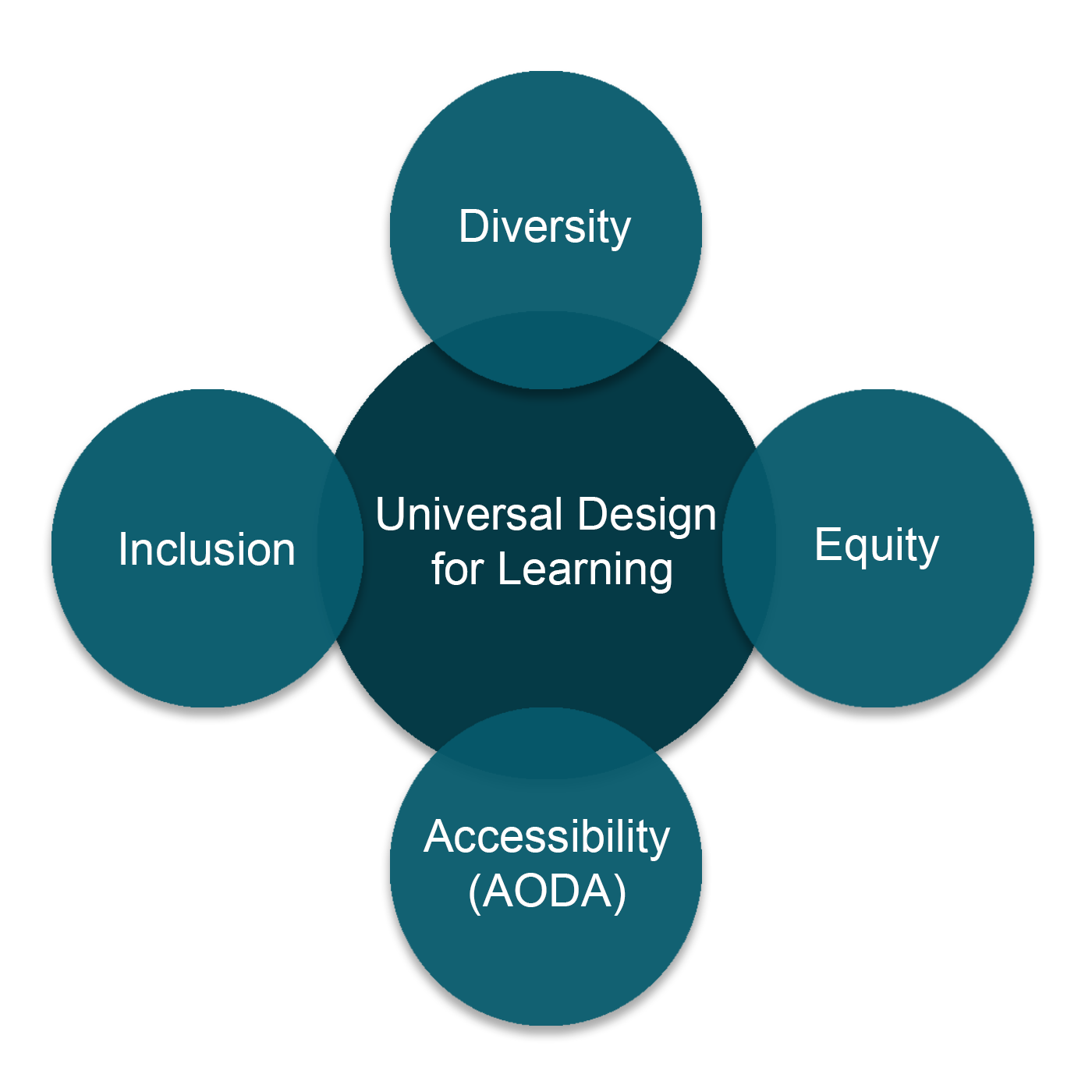1.1: Origins of UDL
Concept of Universal Design
In the 1980s, architect Ronald Mace introduced the term Universal Design (UD). In its original application, UD refers to “the design of products and environments to be usable by all people, to the greatest extent possible, without the need for adaptation or specialized design” (Connell et al., 1997). For example, consider the barriers presented by entering a building that has steps up to a door with handles. Who would have difficulty accessing such a building?

Now consider a building entrance that is at ground-level entry with doors that open automatically. Who would have difficulty navigating this building?

Just as stairs pose barriers in the built environment, there are barriers to learning in education. The concept of removing barriers and increasing access has been applied to the field of education with the development of various UD frameworks, including Universal Instructional Design (UID), Universal Design for Instruction (UDI), and Universal Design for Learning (UDL).
Despite their differences, inclusive instruction is the common goal of all three of these frameworks. The ultimate goal of inclusive instruction is to remove unnecessary barriers and improve access for all learners.
Universal Design for Learning
In the 1900s, David Rose, Anne Meyer, and their colleagues at the Center for Applied Special Technology (CAST) developed the UDL framework![]() , which is the only UD framework that is based on research on cognitive neuroscience (Meyer, et al. 2002; Rose, Rouhani, et al., 2013; Rose, 2016). CAST is an organization whose mission is to eliminate barriers to learning and support the development of expert learners while addressing aspects of inclusion, diversity, equity and accessibility.
, which is the only UD framework that is based on research on cognitive neuroscience (Meyer, et al. 2002; Rose, Rouhani, et al., 2013; Rose, 2016). CAST is an organization whose mission is to eliminate barriers to learning and support the development of expert learners while addressing aspects of inclusion, diversity, equity and accessibility.

A key aspect of UDL is understanding that all learners are variable and that the “average student” simply does not exist. We cannot plan for every learner variable, but we can design, develop, and deliver our curriculum knowing our learners will have diverse needs and providing them options to ensure everyone’s needs are met.
Todd Rose explains that when organizations plan for the “average” they are not, in fact, planning to meet anyone’s needs. Education can struggle with this concept; as educators, we often design curriculum for “average” post-secondary students. Instead, if we plan to support learners at the margins, we go a long way to creating more equitable, accessible, and inclusive learning environments for all diverse student populations. Watch Todd’s video to fully appreciate the need to rid ourselves of the idea of “average”.
The TEDx (2013) video, The Myth of the Average: Todd Rose at TEDx Sonoma County [18:26], explains why we should rid ourselves of the idea of the “average”.
Once we accept that there is no average, we can start to find teaching and learning strategies to support all of our students. The UDL guidelines provide the strategies we need and offer a path for curriculum design, development and delivery that embeds equity, diversity, access and inclusion.
Activity 1: Define UDL
Define UDL as you understand it within your context. If UDL is new to you, what does the phrase “Universal Design for Learning” invoke for you? If you already use UDL principles, how do you define them in your teaching and/or learning?
You are invited to record your definition in the way that works best for you, which may include writing, drawing, creating an audio or video file, mind map or any other method that will allow you to document your ideas and refine them at the end of this module.
Alternatively, a text-based note-taking space is provided below. Any notes you take here remain entirely confidential and visible only to you. Use this space as you wish to keep track of your thoughts, learning, and activity responses. Download a text copy of your notes before moving on to the next page of the module to ensure you don’t lose any of your work!
References
chrisinplymouth (Photographer). (2017). Automatic door [Photograph]. Flickr. https://flic.kr/p/Xmqa6m. CC BY-NC-SA 2.0.
Connell et al. (1997). The Principles of Universal Design. NC State University. https://projects.ncsu.edu/ncsu/design/cud/about_ud/udprinciplestext.htm
Rose, D. H., Meyer, A., Strangman, N., & Rappolt, G. (2002). Teaching every student in the digital age: Universal design for learning. Association for Supervision and Curriculum Development.
Rose, L.T., Rouhani, P., & Fischer, K.W. (2013). The science of the individual. Mind, Brain, and Education, 7(3), 152-158. https://doi.org/10.1111/mbe.12021
Rose, T. (2016). The end of average: How we succeed in a world that values sameness. Harper Collins.
rvaphotodude (Photographer). (2006). Thomas Jefferson High School – Entrance [Photograph]. Flickr. https://flic.kr/p/4oQL9q. CC BY-SA 2.0.
TEDx Talks. (2013, Jun 19). The Myth of Average: Todd Rose at TEDxSonomaCounty [Video]. YouTube. https://youtu.be/4eBmyttcfU4

